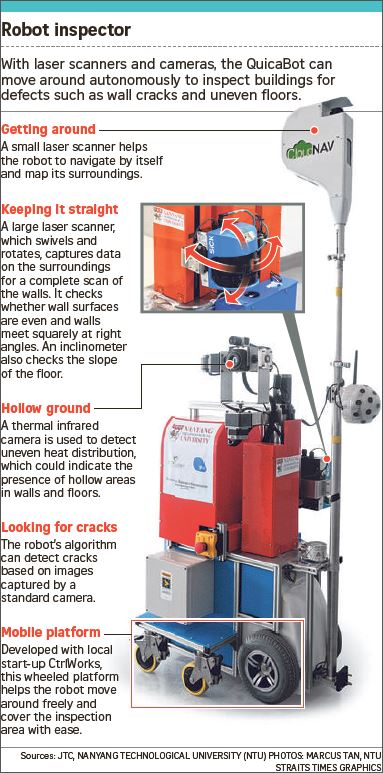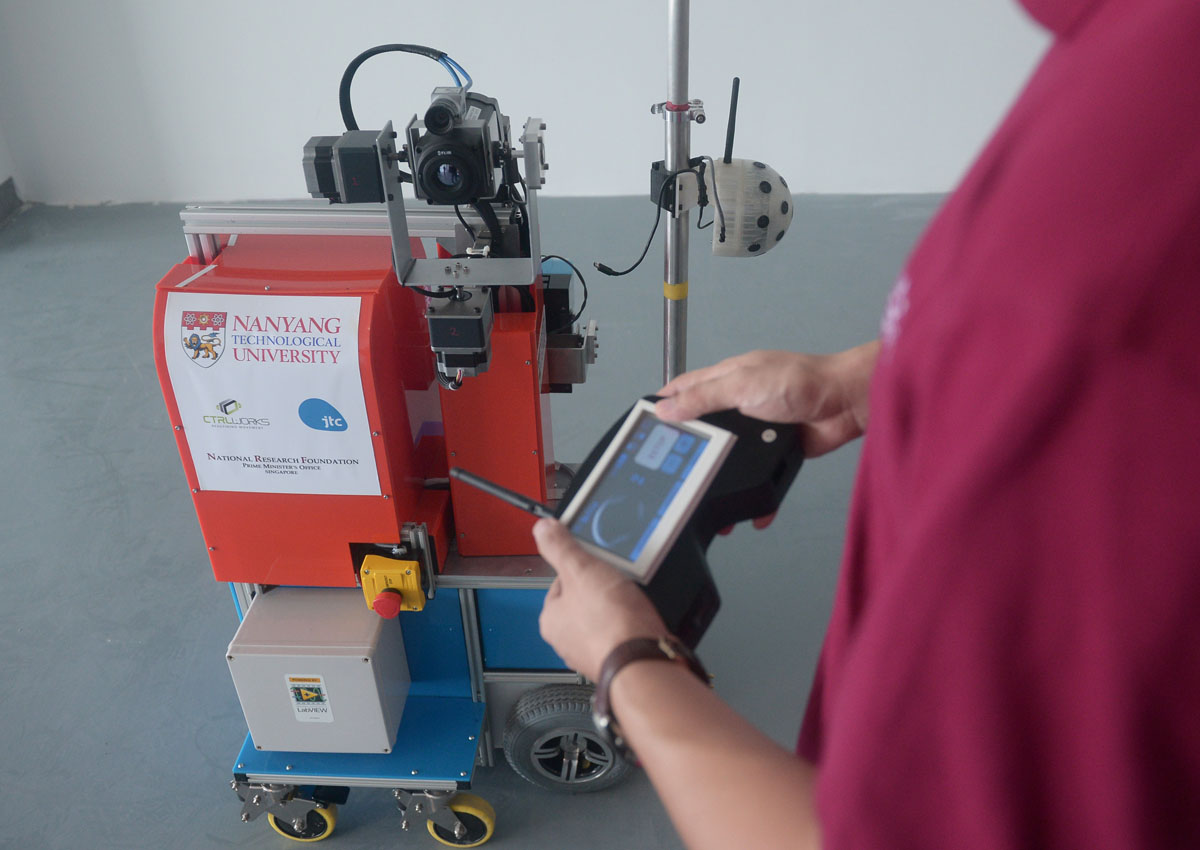It is no R2-D2 and looks like some kind of trolley with brightly coloured boxes and a pole sticking out.
Despite its less than impressive exterior, QuicaBot can do a quicker and more accurate job of inspecting a building for defects than humans, saving time and manpower.
Invented by scientists from Nanyang Technological University (NTU) and co-developed with national industrial developer JTC and local start-up CtrlWorks, the human-height robot can move about by itself to scan a room for defects.
Human inspectors usually use tools such as set squares and spirit levels – an instrument with a liquid-filled tube in which a bubble indicates how level a surface is – to check whether walls meet at right angles and if floors are even.
But QuicaBot – short for Quality Inspection and Assessment Robot – uses a laser scanner to capture data about the room and check for alignment and evenness.
It also has an inclinometer to check the slope of floors, a camera to detect cracks on walls or floors and a thermal infrared camera to check for hollow tiles.
A regular inspection that takes one day with two human inspectors could be done in half a day with one human inspector and QuicaBot. Unlike humans, QuicaBot does not get tired and can run for 36 hours after two hours of charging.
“Our aim is not to replace the human inspectors, but instead we are trying to make the inspection autonomous, more reliable and faster,” said the project leader, Assistant Professor Erdal Kayacan, from NTU’s School of Mechanical and Aerospace Engineering.
With QuicaBot doing more mundane work, human inspectors can focus on other tasks such as checking if windows are airtight and bathroom surfaces are watertight.
QuicaBot also allows more comprehensive inspection. In testing for evenness, for example, human inspectors take sample readings at various points on the wall. This could result in them missing some areas. By contrast, the robot takes a full scan of the area, essentially mapping it in digital 3D.
It can also upload data on defects spotted, integrating this with existing digital models of the building.
“JTC hopes that QuicaBot can enable high-quality inspections that are more precise and consistent, while reducing the manpower and time needed to conduct such inspections,” said Mr Koh Chwee, director of JTC’s technical services division and co-director of the NTU-JTC Industrial Infrastructure Innovation Centre.
The robot took a year to develop and is supported by the National Research Foundation Singapore.
Having tested the robot on a small scale, JTC next plans to try it out on a larger scale, such as the JTC Space @ Gul project, which should be ready for inspection early next year.
Industrial buildings are particularly suitable as their rooms are much larger. “That is where you see the bigger benefit of this machine,” said Mr Koh. If that field trial proves successful, the team can look at how to scale up for potential commercial application.
The cost of developing the robot is comparable to an inspector’s annual salary, said the co-principal investigator, Professor Chen I-Ming.
But it is too early to talk about commercial costs as the model could take various forms such as leasing or service provision, he added.

janiceh@sph.com.sg

This article was first published on September 22, 2016.
Get a copy of The Straits Times or go to straitstimes.com for more stories.






